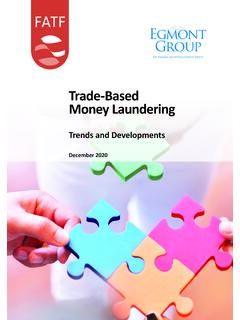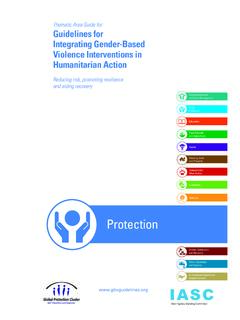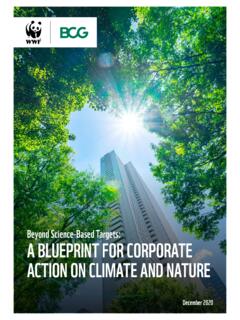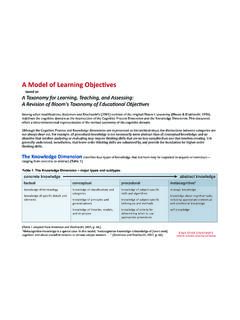Transcription of Project-Based Learning by Design
1 AN action RESEARCH ON Project-Based Learning AND UNDERSTANDING BY Design AND THEIR EFFECTS ON THE SCIENCE ACHIEVEMENT AND ATTITUDE OF SCIENCE STUDENTS BY RICHARD DEAN B. RUBRICA CALOOCAN CITY, PHILIPPINES FEBRUARY, 2018 i ABSTRACT Project-Based Learning has been the leading strategy used by most of the top educational systems in the world. Authentic Learning that addresses the 21st century skills is what PBL offers. However, little research has been done to explore its potential in improving the quality of education in the country and what framework to be used to be able to curricularize PBL. The aim of this research is to examine the effect of Project-Based Learning using Understanding by Design framework in improving the academic achievement and attitudes of grade 6 students in science 6.
2 Two sections in the grade 6 level from Sta Quiteria Elementary School in Caloocan City was selected for the study. Group A (Gold) was taught through Project-Based Learning technique and Group B (Garnet) was taught through a more traditional teaching technique. A pretest and posttest was administered on both groups to find out if there is a statistical difference between their achievements. There was a statistical difference between the mean academic achievement scores of pretest and posttest after the intervention. The statistical difference has proven the effectiveness of PBL as a more effective method in teaching science. In addition, motivation and attitude were positively impacted.
3 Further studies and in-service trainings for teachers were recommended to discover the effectiveness of PBL in other subject areas. Key words: Project-Based Learning , Understanding by Design , Authentic Activities, Science teaching, 21st century ii TABLE OF CONTENTS LIST OF LIST OF CHAPTER I II REVIEW OF RELATED III IV DISCUSSION, CONCLUSION AND DISCUSSION OF Student Student Teacher Class APPENDICES APPENDIX A: Unit APPENDIX B: Second quarter curriculum APPENDIX C: Class dojo positive and negative APPENDIX D: Student APPENDIX E: Teacher journal sample APPENDIX F: project proposal sample APPENDIX G: Final project APPENDIX H: Science project APPENDIX I: Sample class iii LIST OF TABLES 1.
4 The Logic of Backward 2. Understanding by Design Unit 3. UbD-PBL Unit Plan 4. action Plan with Essential 5. Diagnostic Test Mean 6. Independent Samples T-Test of Diagnostic Test 7. Second Periodical Test Mean 8. Independent Samples T-Test of Second Periodical Test 9. Summary of Proficiency Level (Group A)..49 10. Summary of Proficiency Level (Group B)..49 11. Summary of Survey Responses (Group A)..51 12. Summary of Survey Responses (Group B)..51 13. Student Survey 14. Darwin s Positive and Negative iv LIST OF FIGURES 1. BIE Gold Standard PBL Essential project Design 2. Steps in 3. UbD 4. Class Dojo Positive Responses 5. Class Dojo Negative Responses 6.
5 Student Interview Responses 7. Group A and Group B Class Dojo 8. Darwin s Class Dojo CHAPTER I INTRODUCTION The Philippines educational system is on its progressive steps in completing the transition to the K-12 program. Science, being one of the core subjects in elementary education will again undergo a major program overhaul. Elementary science education in the country is evidently poor compare to its ASEAN neighbors. Student performance in the international studies (TIMMS 1995, 1999, 2003) is consistently low. The Philippines ranked 34th out of 38 participating countries and the results from the National Achievement Test given by the Department of Education are also in dismaying figures (UNESCO, 2010).
6 The problem does not lay on the curriculum program per se, hence, everything boils down to the pedagogical roots. Students lose interest in Learning science because its teaching is predominantly transmissive which makes it more abstract in the eyes of the students and therefore, seeing it as an irrelevant subject matter (UNESCO, 2010). Thus, as teachers, we have to provide organic experiences that will make the students construct knowledge meaningfully in an appropriate social context (Dewey, 1938). According to Lev Vygotsky s (1978) Zone of Proximal Development, children s inquisitiveness begins long before they attend formal schooling. For this reason, children are considered born scientists (Keller, 2012).
7 Consequently, didactic pedagogy cannot cater their curiosity about the world and their questions about everything. Children learn science by doing 2 science, by asking and exploring their answers to their questions (Martin, 2002). Science is not a subject to be taught, but rather a process for Learning something new (Keller, 2012). Scientific knowledge is shared through social transactions and interactions between the learners (Roth 1990). Learning entails active efforts of the learner and therefore, Learning science is an active process (Tyler 1949). Despite the radical changes in the curriculum the Department of Education is making through the years to improve the quality of education, teachers are still widely using didactic pedagogy and generic lesson plans in delivering their lessons.
8 The K-12 program is anchoring the philosophy of educational constructivism that requires authentic pedagogical approach and has to reflect the real-world interconnections in science through authentic assessments (Tam, 2000). Constructivism is also a Learning strategy that draws students prior knowledge and skills to be able to synthesize new understanding (Matthews, 2003). Knowledge learned at the level of rote memory rarely transfers; transfer occurs when the learner knows and understand the concepts and be able to apply it to solve problems in different situation. Learning with understanding is more likely to promote transfer than just memorizing a text (Wiggins & McTighe, 2001). Students at this point in time live in a world with vast sources of information.
9 Therefore, teachers have to teach the students how to properly choose and use that information (Trilling & Fadel, 2009). There is also a need to prepare them in the rapidly changing world of work. Collaboration, critical thinking, problem solving, and self-management are the success skills teachers need to equip the students (Larmer & Mergendoller, 2015). In that sense, teachers should embrace this new role as Learning coach and manager (Barron & Darling-Hammond, 2008). 3 The teacher researcher is a science teacher for about five years since he entered the public school. Sta. Quiteria elementary school is one of the seven schools in the district of Tanque in Caloocan City. The teacher researcher teaches six sections of sixth grade science.
10 There are a total of thirteen sections in the grade six and the teacher researcher is teaching almost half of it. The grade level has one homogeneous section that is considered the cream section which makes the remaining sections heterogeneous. Students are required to take a diagnostic test at the beginning of the school year to assess the content that has to be taught with greater emphasis and to have data to be compared in the achievement test at the end of year following the spiral approach of the K-12 program. The results of the diagnostic exam served as basis in choosing the subjects in the action research. The researcher took the two sections at the bottom of the list which happens to be two of his classes.










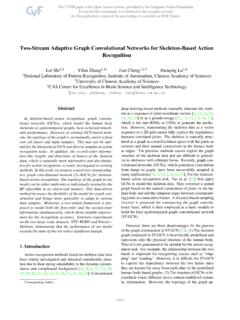
![arXiv:1801.07455v2 [cs.CV] 25 Jan 2018](/cache/preview/c/1/f/1/b/a/a/5/thumb-c1f1baa5f6e090b207f4f18380d23ecd.jpg)

